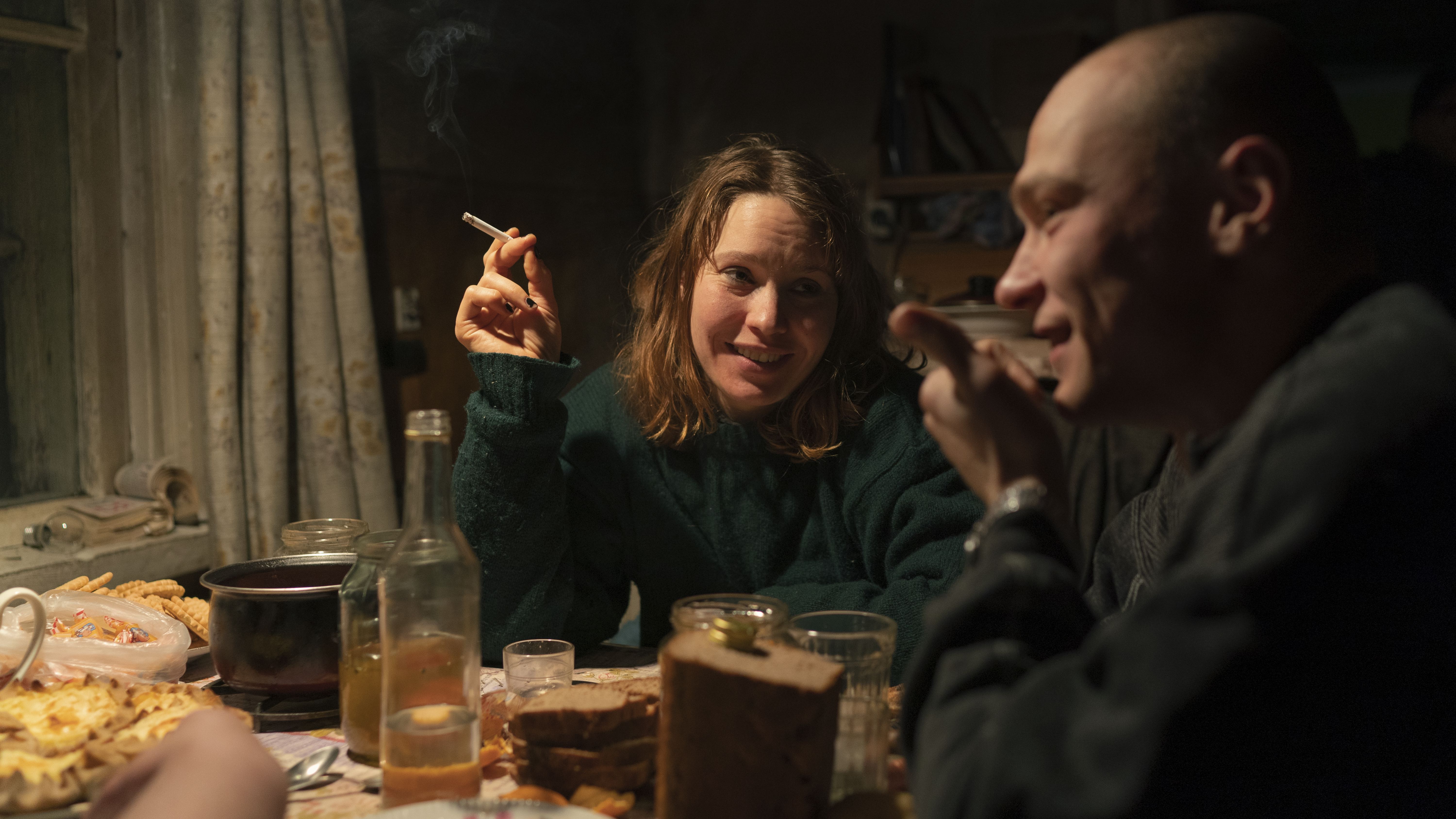Caitlin Quinlan speaks with the director and star of Compartment No.6, the intimate arthouse darling that jointly won the Grand Prix award at Cannes last year. Here, Juho Kuosmanen and Seidi Haarla speak about adapting the novel, working with their leading man and capturing the charm of the train.

CAITLIN QUINLAN: Can you talk about your interest in adapting Rosa Liksom’s novel for this film?
JUHO KUOSMANEN: I read the novel around 10 years ago when it was published. I really enjoyed some of the images it had and the atmosphere in many places, but at the same time I had doubts about the adaptation, because the novel takes place in different time periods and it could have ended up being really long. I was also afraid of the fact that, usually, books are better than the film. So, many years after I read it, I was sitting on a train and I thought I really should read the book again, because there was something about it. But once again, I thought no it’s impossible to adapt. Then I met the author and she said that I can do whatever I want with the book, that they would be two different works and the book doesn’t change no matter what I make from it. It felt easier, that we weren’t stuck with the book and didn’t have to keep anything from it.
When we were ready to start filming, I wrote to Rosa Liksom to say that ‘I think this is no longer based on your book, but is inspired by it. Are you fine with that?’ And she said, ‘Yeah, yeah. Everything sounds good. Just go and finish the film.’ And then after the premiere, she said, ‘You didn’t change anything’.
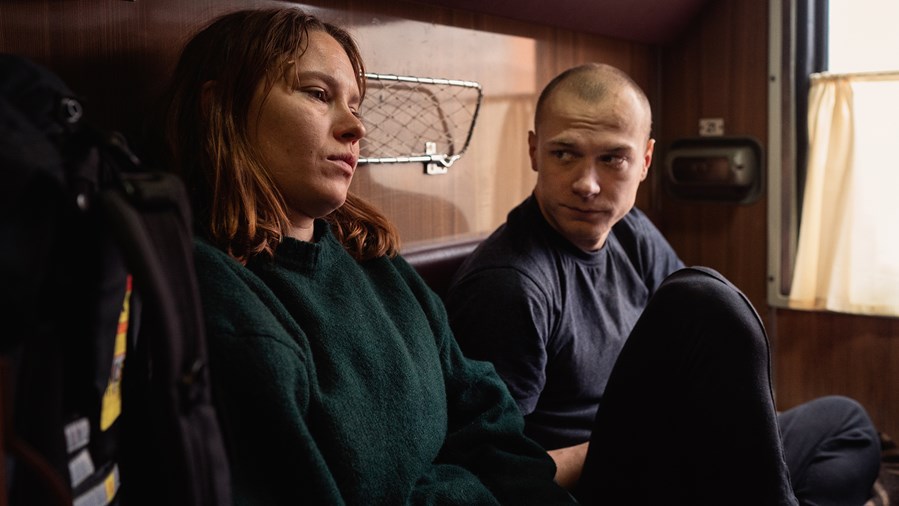
Compartment No. 6 (2021)
CQ: Seidi, did you read the book as well to build an image of your character in your mind?
SEIDI HAARLA: I had some images based on my first reading experience when the book came out. I was much younger and I had also studied in St Petersburg. So, all the ingredients in the book felt almost too close to familiar. I read it the second time when I met Juho. I think for the film and the character I play, I had to find a combination of all those experiences in reading and seeing and watching, and then find a way to interact with the people I’m working with in that specific place.
JK: We were thinking about our reading experiences and how we felt, how we saw those things. It was about finding the common ground – the things we understand, the feelings we share, because I think that’s what you can work with when you are dealing with an abstract art like film. And with those emotions you can’t really verbalise, if you try to talk about them, you can sense they’re feelings we all share. Seidi joined in the early stages of the film. I think by the second time she read the novel she had already read an early draft of the script. We talked about both because that version of the script was not ready.
SH: I also got to know from the beginning that we were not remaining faithful to the novel. For example, it was clear that I was not supposed to act like a 20-year-old.
JK: Yes, the book takes place in many time periods, and the train journey is just one part of it. It’s much more.. not nightmarish, but there's this situation between her and this guy who is much older. There is this threat of violence in the air all the time. That was something we wanted to avoid because in a film it works in a different way – it becomes the main tension. People are just waiting to see what will happen to her, and that was not what we wanted people to focus on. And I think this is one of the biggest challenges when adapting a book, because in a novel you have much more freedom, you have imagination, it’s not so linear or straightforward.
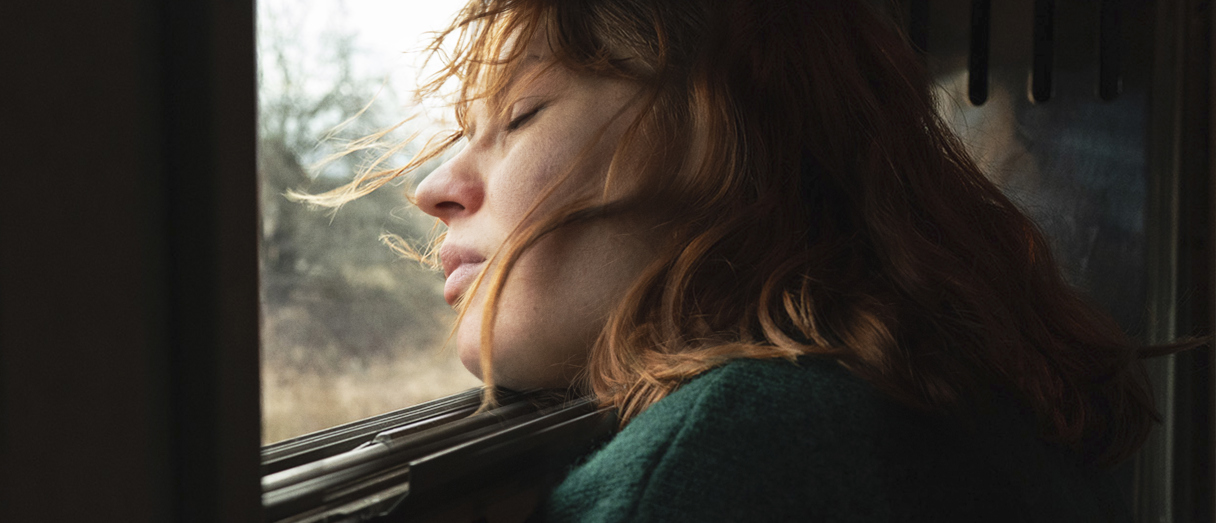
CQ: I was really interested in the train as a kind of non-place in the film to give the characters a space to explore their identities, their feelings, their longings.
SH: The train… I think there is maybe no other place compared to a train. How it moves, the restrictions.
JK: It’s a perfect place for encountering strangers.
SH: At the same time it’s freedom of movement. You’re not stuck. You’re not in a grave. But at the same time, someone else has built the railway and planned the route.
JK: The year Compartment No.6 was published was the same year the Finnish film historian – and my teacher – Peter von Bagh published a book called On the Train, looking at films set on trains. I actually forgot about it. Then, a few weeks ago I found it on my desk and I thought, when was this published? I remembered that I had read that book at pretty much the same time as Liksom’s novel, so I think it was also an influence that encouraged me to shoot a film in a train. A train is the best way of encountering new people. There's some kind of atmosphere there, like the atmosphere that used to be in cigarette rooms where people just start to chat. It's more of a no man's land than anything else. These two characters are a bit out of place; she is at this fancy party in the beginning but she doesn’t really belong there. She would like to be part of that atmosphere, to be part of that apartment, but she's not, and I think this guy is a bit the same. They never really had anything like a home. So this kind of place, like a train, is perfect for them.
(Here Juho shows an image of Edward Hopper’s painting Compartment C Car (1938) on his phone and reads from Hopper’s website.)
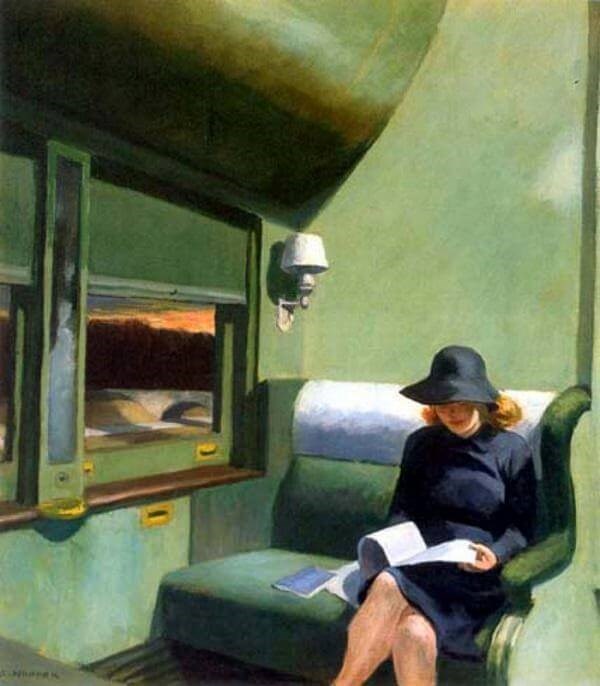
Compartment C Car by Edward Hopper (1938)
JK: Hopper's people give the impression of being people attempting to escape something. They are involved in themselves and cannot seem to get their lives straight. They escape the society of others, and would like to escape themselves. They are not really at home anywhere, neither in a room nor outside, neither at work nor at play, neither alone nor with others. That is why they are on the move. Their home is a train station, a highway restaurant, a gas station, a hotel or motel, a train compartment, a snack bar, a theater [sic] foyer, a movie house. They are going somewhere without being able to arrive. They have personality traits that seem mutually exclusive. They are mobile and restless, yet statically tied to some location from which they will probably never escape.
This is the feeling that they share. I also like these kinds of non-places, you have a different freedom in them somehow, and the place doesn't really define you.
SH: When I think about safe places I think about the train, and the compartment and then, for example, one's own bed. And there's something really right in how some people share this space in trains. Because the compartments are small they get the chance to adapt themselves to the one other person travelling with them, and only because they happened to be travelling in second class and not in third class, for example, where everyone is crammed together.
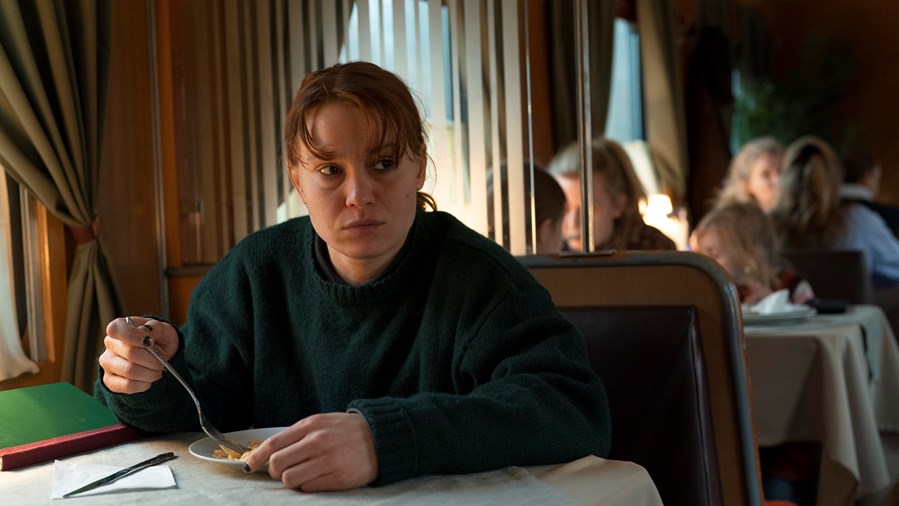
Compartment No. 6 (2021)
CQ: Seidi, how did you work with Yuriy Borisov on creating that relationship between your characters in this small space?
SH: For me, it started when we first met each other. We never talked about what we were going to do, we just knew what was happening with one another. During shooting, depending on which scenes we were covering, we were different with each other. There were days we were really close, and both knew it was important for us to play around and chat and just let go. Then there were days we didn't even look at each other before shooting. Of course, we are professionals and we know how to prepare ourselves for certain scenes, but we didn't have the need to talk about it that much. Also an important point from the first moment was that we didn't have that many words with which to communicate. Yuri didn't speak English that well when we met and my Russian wasn’t perfect. But we felt really close, physically close energy-wise, that it felt really safe and honest – an openness in how we let ourselves be close.
JK: I think from my point of view it was a big moment when we met Yuriy; before that, I always thought it was a story of two totally different kinds of characters sharing this compartment. Then, when I saw them together the first time, it still felt that way but not in the way the script described. Seidi felt the same, and so did the cinematographer and our producer. We all were like ‘This is the couple, but why?’ I realised that the description of this guy in the beginning is someone’s first impression, but the guy that we actually should find is the guy from the end of the film. In the beginning he is acting according to a prescribed role, and so is she. They are hiding behind these roles and that's why they are so disconnected. So I think it's easier to act a certain way when you are encompassing a strong role, say, if you are behaving arrogantly or something, but really the core of the film is how they are in the end, how they are thawing to become the same character. No matter how professional you are, it is a difficult thing to act out; if you're not really connecting on a personal level, it's really hard to make it so organic. So for me, when we found Yuriy I realised that we were supposed to find the characters from the end of the film, when they are more like Seidi and Yuriy, and there's less acting in the end.
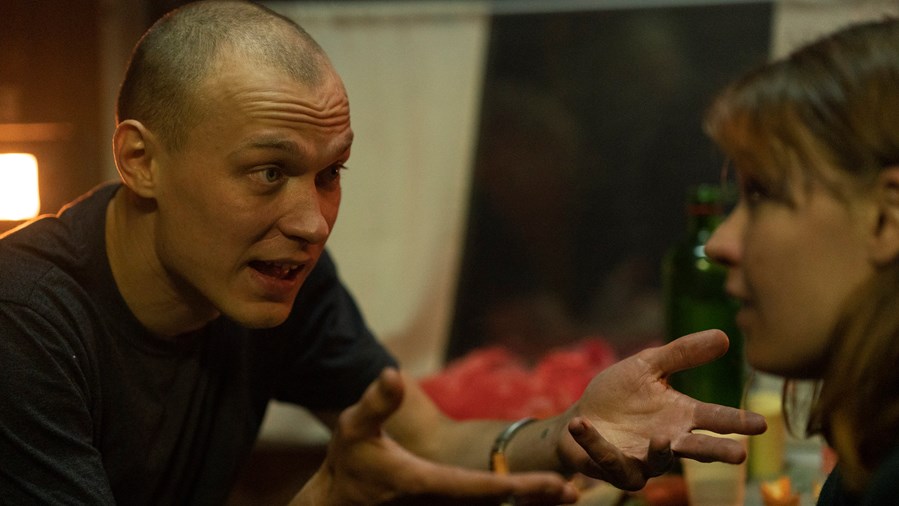
Compartment No. 6 (2021)
CQ: What do you feel the story conveys about human relationships and loneliness?
JK: It’s still hard to really verbalise those emotions, because what we talked about was that it's not a romantic love story, they are not really falling in love in a way that the audience would hope.
SH: Or show their love in those expected ways.
JK: Yes, so it was about love, but it was more about connection and finding somebody you didn't know existed, because I think that what connects them is their loneliness. That's why they are so guarded and play these roles in the beginning, because they are trying to portray someone who would be more accepted than themselves. They are not sharing those words, they don't really talk about emotions, but they just start to feel. They realise that the other one feels the same. I think the core point is the moment when the camera is stolen, and he says that everybody should be killed. This is a very brutal thing to say, it's not a nice thing, but at the same time, it's the nicest thing he can say to her at that moment. It's the most comforting thing, Ljoha is saying, ‘I know how it feels to be disappointed by human beings. I know how you feel.’ Also the kissing was one core moment that we talked about, how they react to that. It's like learnt behaviour, it's not really something that they want, but it's one of those narratives they feel they have to follow.
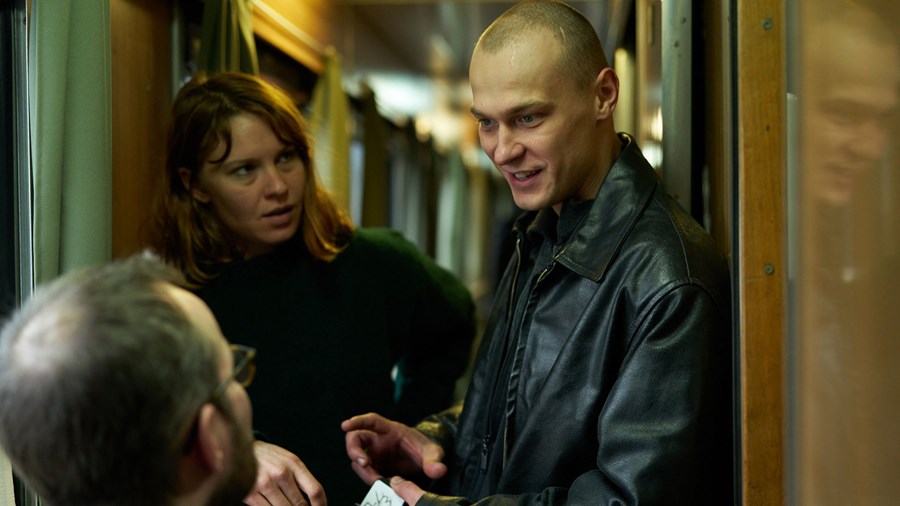
Seidi Haarla, Yuriy Borisov and Juho Kuosmanen on the set of Compartment No. 6
CQ: I wanted to ask about creating a sense of warmth through the technical aspects of the film. The Russian weather is incredibly cold outside the train but inside the train, the colours are warm and the camera is soft. There’s a real cosiness to it.
JK: We wanted it to feel like a nice memory. We felt that it didn’t really have a specific time. It happens somewhere around the millennium, but it doesn’t feel like a film that was shot during the millenium, it feels like a film that is told from the present time looking back. This is something that I also felt with the book – there is a feeling of going through your own diary and remembering these really nice moments. The clear choice was to use film, that's how we always work. This time it was 35mm because we wanted it to be a bit heavier than, for example, The Happiest Day in the Life of Olli Mäki which was 16mm and more of a reportage style. Then we talked about the lights because outside we wanted to have these old industrial lights, and then inside the compartment there are no pure white lights, all the light is a bit yellow. The textures of the materials in the train were really important to us, so that you could really feel they were worn and used, which creates the feeling of material and builds warmth.
SH: The hardest material was Ljoha’s jacket, which was maybe on purpose.
JK: Yes that was on purpose, because a leather jacket is the coldest thing you can wear when it’s cold. We wanted to show him not dressing very wisely. Contrast is such a big thing in cinema – without contrast there's nothing – so that's why we also wanted this film to have a really warm feeling in the compartment, but the outside is cold and windy and freezing. So it’s like a warm core, a warm heart in between them.
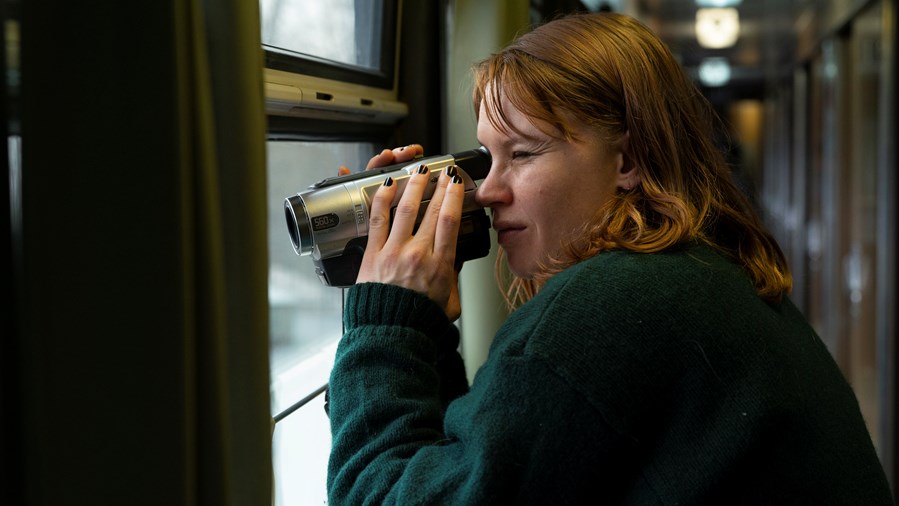
Compartment No. 6 (2021)
COMPARTMENT NO.6 IS OUT NOW
